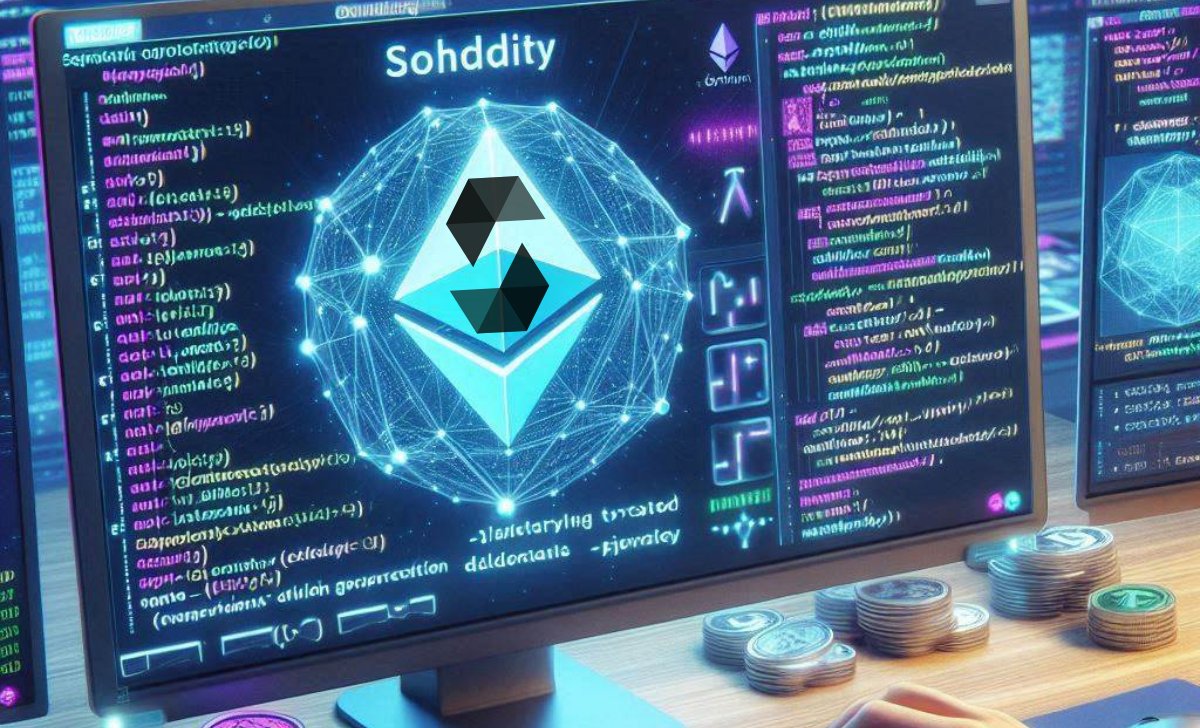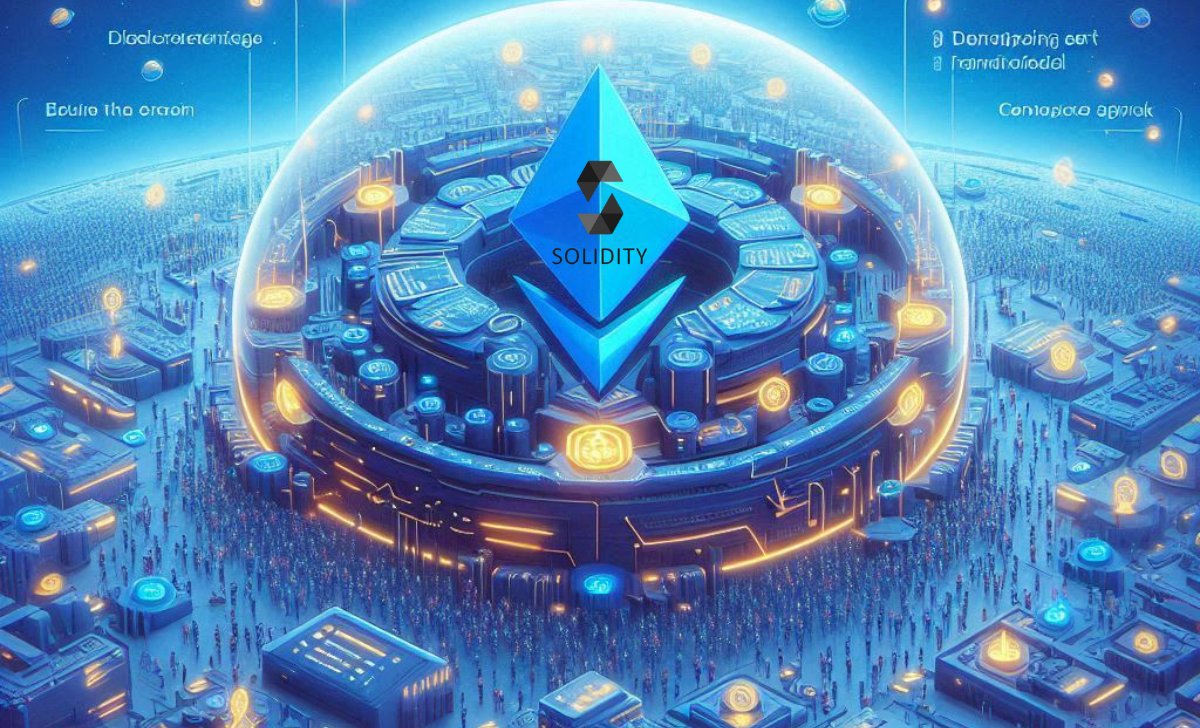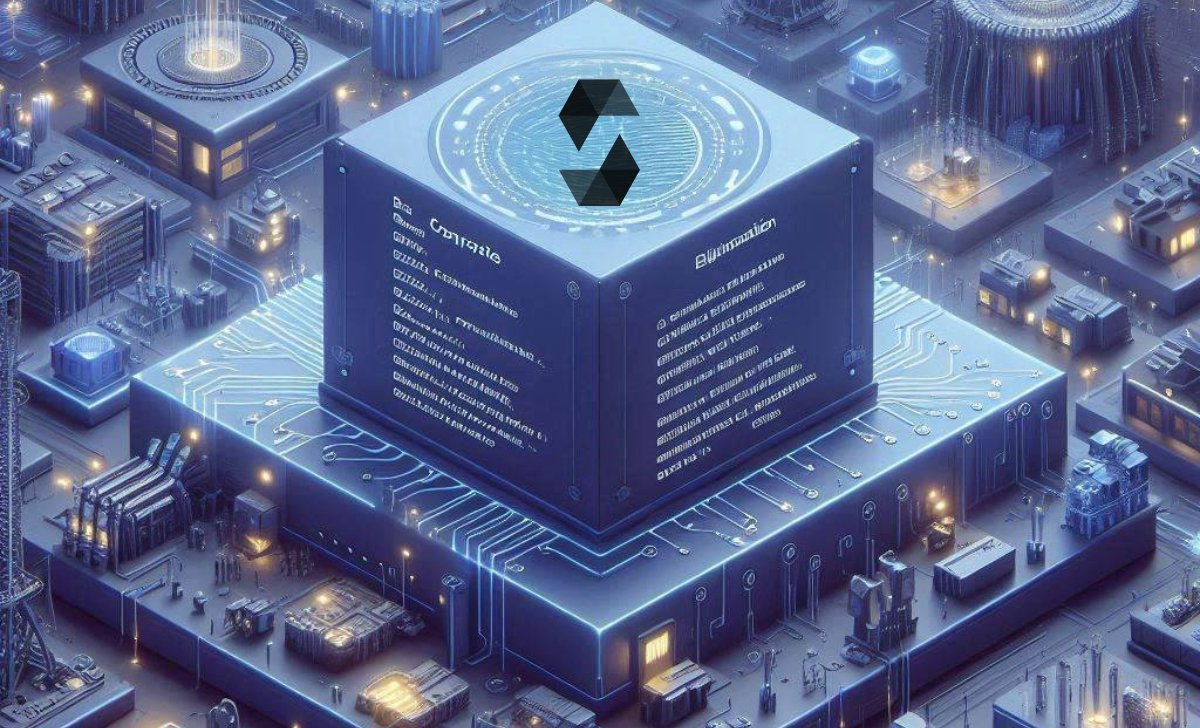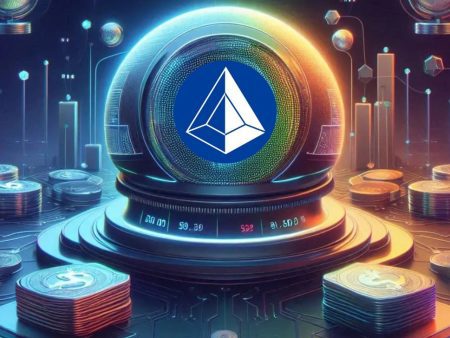Solidity is the most widely used programming language for building smart contracts on the Ethereum blockchain and other EVM-compatible platforms. It powers thousands of decentralized applications by enabling secure, self-executing agreements without intermediaries.
This article of TopCoin9 will be explored covering its core features, real-world use cases, pros and cons, how it compares to other languages, and where to start if you want to learn it today.
What Is Solidity?

Solidity is a high-level, statically typed programming language designed specifically for writing smart contracts on the Ethereum Virtual Machine (EVM). Developed in 2014 by Gavin Wood and other Ethereum contributors, it allows developers to create decentralized applications (dApps) that are secure, self-executing, and immutable once deployed on the blockchain.
The language is influenced by JavaScript, C++, and Python, making it familiar to many developers. According to the official Ethereum Foundation documentation (2024), Solidity was designed to enhance the logic behind trustless computation in blockchain systems.
Thanks to its smart contract capabilities, it is now widely used not just on Ethereum, but also on other EVM-compatible blockchains such as Binance Smart Chain, Polygon, and Avalanche.
It plays a pivotal role in powering dApps across industries like DeFi, gaming, NFTs, and DAO governance, and it’s now considered the industry standard for Ethereum-based development.
As the cornerstone of smart contracts, it is closely tied to the rise of decentralized technologies — so let’s explore what makes this language so unique in the next part!
Key Features That Make Solidity Powerful
It is purpose-built for blockchain, offering features tailored to the needs of decentralized systems. Here are its key strengths:
- Smart contract-oriented syntax
- Static typing with user-defined types (e.g., structs, enums)
- Support for inheritance and modularization
- Built-in security patterns like modifiers
- Access to Ethereum accounts, gas, and block data
According to an in-depth review by Cointelegraph (2023), Solidity’s syntax was intentionally designed to reduce the learning curve for developers transitioning from traditional languages like JavaScript.
Additionally, it supports complex data types and allows for function overloading, contract inheritance, and low-level assembly-like language (Yul) for advanced use cases. These features empower developers to write efficient, modular, and gas-optimized smart contracts.
Now that we understand Solidity’s core strengths, it’s essential to see how they are applied in the real world of smart contracts. Let’s explore that in the next section!
How Solidity Powers Smart Contracts

Smart contracts are self-executing code that runs when specific conditions are met — essentially programs that live on the blockchain. It is the most widely used tool to write them.
For example, a decentralized exchange like Uniswap uses it to implement liquidity pools, swapping logic, and token transactions. These contracts handle billions of dollars in assets, all controlled through immutable Solidity code.
According to Investopedia (2023), smart contracts eliminate intermediaries, cut down processing time, and reduce fraud. Solidity makes this automation secure and verifiable through transparent source code on-chain.
Projects like Aave (DeFi lending), OpenSea (NFT trading), and Gitcoin (decentralized crowdfunding) are built entirely using it, reinforcing its dominance in Web3 infrastructure.
With its adoption growing across various sectors, how does it compare to its competitors? Find out more in the next section!
Solidity vs. Other Smart Contract Languages
While Solidity leads in popularity, it’s not the only smart contract language. Others include:
- Vyper: A simpler, more secure Pythonic alternative to Solidity, often used in projects like Yearn Finance.
- Rust: Used in Solana smart contracts; focuses on speed and memory safety.
- Move: A language designed by Facebook’s Libra team, now used on Aptos and Sui for resource-based execution.
According to a 2024 developer survey by Electric Capital, over 75% of Ethereum developers prefer Solidity due to its community support, tooling, and rich documentation.
That said, it does have downsides, like a steeper learning curve for absolute beginners and the potential for costly security bugs if not coded properly.
While the language has its pros and cons, it remains the standard for a reason. Let’s dive deeper into its strengths and weaknesses.
Pros and Cons of Using Solidity

Like any powerful tool, Solidity comes with its own set of strengths and limitations — let’s take a closer look at both sides:
Pros
- Strong community support
- Extensive learning resources
- Powerful EVM tooling (e.g., Hardhat, Foundry, Remix)
- Wide adoption across DeFi and NFT ecosystems
Cons
- Potential for security vulnerabilities (e.g., reentrancy bugs)
- Not suitable outside of EVM chains
- Verbose syntax compared to newer smart contract languages
A 2022 academic paper from the University of Zurich highlighted that most smart contract exploits are due to poor Solidity coding, not the language itself — underscoring the importance of good development practices.
These challenges haven’t stopped developers from diving in. So, how do you get started with it? Details will be revealed in the content below!
How to Learn Solidity: Roadmap and Resources
Whether you’re a Web2 developer or a blockchain newbie, there are plenty of high-quality resources to learn Solidity in 2025:
- Solidity Documentation – Official guide with code examples and updates.
- CryptoZombies – A gamified platform for interactive smart contract learning.
- Ethereum.org Developer Portal – Offers tutorials, tooling guides, and EVM insights.
- FreeCodeCamp, Coursera, Udemy – Courses for all skill levels.
IDE tools like Remix IDE (browser-based) and Hardhat or Foundry (for local development) are widely used by developers to compile, test, and deploy Solidity blockchain contracts efficiently.
Once you start building, the next question is: What can you actually create with it in the real world? Details will be revealed in the next content!
Real-World Applications Built with Solidity

It isn’t just for theoretical experiments — it powers some of the most valuable projects in blockchain space. Here are a few:
- Uniswap: One of the largest DEXs, with over $3B in locked value.
- Compound: A DeFi protocol that allows users to lend and borrow assets.
- Decentraland: A virtual world where assets and land are governed by smart contracts.
- MakerDAO: The creator of DAI stablecoin, operating under Solidity-based governance contracts.
According to DappRadar (2024), over 80% of top Ethereum dApps use Solidity. Its ability to create transparent, trustless logic has made it foundational for blockchain development.
As the ecosystem evolves, where is it headed next? Let’s explore that in the next part!
The Future of Solidity and Smart Contract Development
It is far from static language. It receives regular updates from the Ethereum Foundation, with the latest version 0.8.23 (as of 2025) improving safety features, gas optimizations, and Yul integration.
Moreover, the rise of zkEVMs (Zero-Knowledge Ethereum Virtual Machines), Layer 2 scaling solutions, and AI-powered development tools is expanding how it can be applied. Platforms like Polygon zkEVM and Scroll extend Solidity’s reach into faster, cheaper environments.
A 2025 report from Messari.io predicts that it will remain the dominant language for smart contracts for at least the next 5 years, particularly due to Ethereum’s network effects and composability.
Conclusion
In conclusion, Solidity continues to shape the future of decentralized applications by providing a robust foundation for smart contract development. We hope this guide has helped you better understand how it works and why it’s essential in the Web3 ecosystem. Don’t forget to follow our latest articles for more insights into blockchain, smart contracts, and everything in between!

Emily Thompson is a highly skilled crypto writer and strategist with extensive experience in blockchain journalism, having contributed to Cointelegraph and Binance Academy. At TopCoin9, she ensures high-quality, SEO-optimized content that educates and informs the crypto community.
Email: [email protected]












